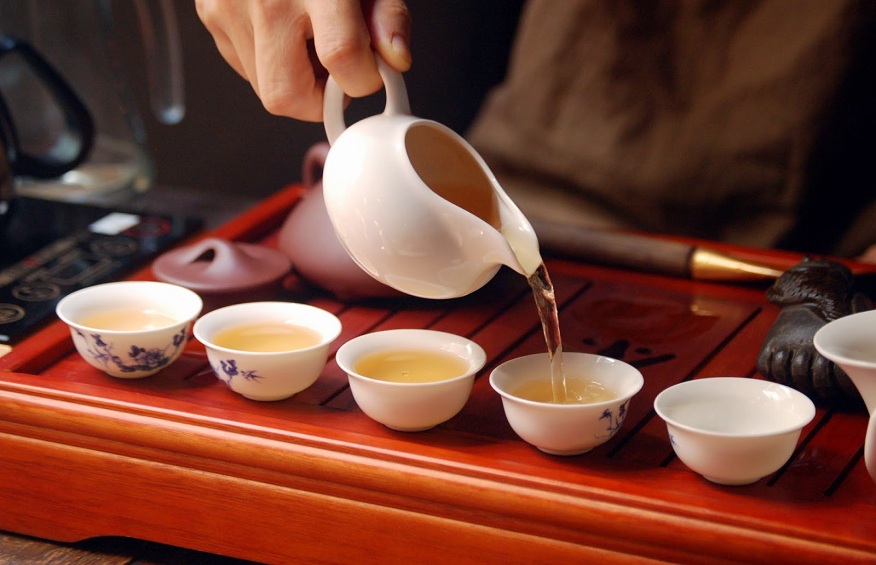
Chinese tea is a realm of taste, fragrance, and tradition. It’s not just a beverage but a time-honoured practice deeply woven into the social and cultural fabric of China. This article offers a brief insight into the art of Chinese tea, its significance, and why it has stood the test of time.
Understanding the Varieties of Chinese Tea
Chinese tea is a tapestry of taste and colour. From the pale, delicate hues of white tea to the robust darkness of black tea, each variety offers a unique sensory experience. Here are the main types, each crafted through a carefully orchestrated process of withering, rolling, fermenting, and drying the tea leaves:
● Green Tea: This tea is minimally oxidised, retaining a fresh, bright flavour and green colour. It’s often characterised by a grassy, earthy taste.
● Black Tea: Known as “red tea” in China due to the reddish colour of the brew, black tea is fully oxidised. This gives it a rich, full-bodied flavour and dark colour.
● White Tea: The least processed tea, white tea is made from young or minimally matured tea leaves. This results in a delicate, light flavour with a slight sweetness.
● Oolong Tea: Somewhere between green and black tea, oolong tea is partially oxidised. The flavours can vary widely depending on the level of oxidation, ranging from floral and fruity to creamy and toasty.
● Yellow Tea: A rare and expensive variety, yellow tea undergoes a longer oxidation process than green tea. This imparts a characteristic yellow colour and a gentle, mellow taste.
● Dark Tea (Pu-erh): This fermented tea is known for its earthy, rich flavour. Dark tea improves with age, much like fine wine.
These variations in taste, aroma, and colour stem from the intricacies of the tea processing steps, each lending a unique characteristic to the final product. Exploring Chinese tea varieties is akin to a journey through the rich tapestry of Chinese tradition and culture.
The Cultural Significance of Chinese Tea
The Gongfu tea ceremony is a testament to the deep-rooted significance of tea in Chinese society. It involves meticulously preparing and presenting tea, fostering mindfulness, respect, and harmony.
The phrase, “Why not have a cup of tea?” is commonly used in China to invite others for a conversation or to resolve conflicts. This reflects the harmonising power of Chinese tea in binding relationships and fostering social harmony.
Health Benefits: More Than Just a Tasty Beverage
Chinese tea is renowned for its delectable taste and its wide array of health benefits. Rich in antioxidants, it is known to help with weight management, improve cardiovascular health, and reduce the risk of certain types of cancer.
Furthermore, Chinese tea is a fantastic source of hydration and can contribute to a better mood and improved concentration. Preparing and drinking tea also has meditative qualities, allowing tea drinkers to pause, relax, and reflect.
Conclusion
The allure of Chinese tea lies in its intricate fusion of taste, aroma, culture, and health benefits. Whether steeping a delicate white or a bold black tea, each cup represents a part of Chinese history and tradition. Immerse yourself in the world of Chinese tea and let it be more than a beverage; let it be a gateway to mindfulness, health, and harmony.
Embracing the art of Chinese tea signifies acknowledging the philosophy it embodies. It’s not just about quenching thirst but about fostering social connection, appreciating the tranquillity of the present moment, and nurturing one’s health. That is the enduring charm of Chinese tea.






